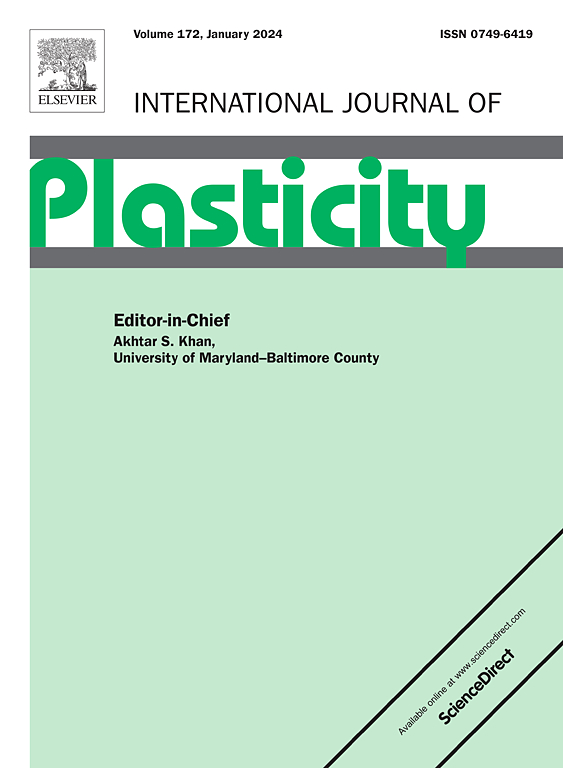Promoting strength-ductility synergy through sequential martensitic transformation in a hierarchical heterostructured eutectic high-entropy alloy
IF 12.8
1区 材料科学
Q1 ENGINEERING, MECHANICAL
引用次数: 0
Abstract
The transformation-induced plasticity (TRIP) effect presents a promising approach to overcome the strength-ductility dilemma in eutectic high-entropy alloys (EHEAs). However, interface instability during phase transformation often leads to reduced ductility due to interfacial cracking. Here, we develop a hierarchical heterostructure EHEA comprising alternating lamellar and equiaxed regions that achieves an exceptional strength-ductility synergy, demonstrating an ultimate tensile strength of 1.56 GPa coupled with 20.7% uniform elongation. The sustained and effective work-hardening behavior of the alloy stems from a sequential martensitic transformation process across different regions, where the transformation kinetics are precisely controlled through B2 phase stability and stress partitioning between regions. Additionally, the formation of a stacking fault network in FCC phases further enhances work-hardening capacity. Notably, exceptionally hetero-deformation induced (HDI) strengthening arises from the multi-scale strain partitioning across different regions and among various phases within the unique hierarchical heterogeneous structure. This study opens a new avenue for designing advanced TRIP-assisted high-performance EHEAs by introducing a hierarchical heterostructure to tailor the kinetics of martensitic transformation.


层次化异质共晶高熵合金中顺序马氏体相变促进强度-延性协同作用
相变诱导塑性(TRIP)效应为克服共晶高熵合金(EHEAs)的强度-塑性困境提供了一种有希望的方法。然而,相变过程中界面的不稳定往往会导致界面开裂而导致延性降低。在这里,我们开发了一种分层异质结构EHEA,包括交替的片层和等轴区域,实现了卓越的强度-塑性协同作用,显示出1.56 GPa的极限拉伸强度和20.7%的均匀伸长率。该合金持续有效的加工硬化行为源于不同区域的连续马氏体相变过程,其中通过B2相稳定性和区域之间的应力分配精确控制相变动力学。此外,FCC相层错网络的形成进一步增强了加工硬化能力。值得注意的是,异常异质变形诱导(HDI)强化是由独特的分层非均质结构中不同区域和不同相之间的多尺度应变分配引起的。该研究通过引入分层异质结构来调整马氏体转变动力学,为设计先进的trip辅助高性能EHEAs开辟了新的途径。
本文章由计算机程序翻译,如有差异,请以英文原文为准。
求助全文
约1分钟内获得全文
求助全文
来源期刊

International Journal of Plasticity
工程技术-材料科学:综合
CiteScore
15.30
自引率
26.50%
发文量
256
审稿时长
46 days
期刊介绍:
International Journal of Plasticity aims to present original research encompassing all facets of plastic deformation, damage, and fracture behavior in both isotropic and anisotropic solids. This includes exploring the thermodynamics of plasticity and fracture, continuum theory, and macroscopic as well as microscopic phenomena.
Topics of interest span the plastic behavior of single crystals and polycrystalline metals, ceramics, rocks, soils, composites, nanocrystalline and microelectronics materials, shape memory alloys, ferroelectric ceramics, thin films, and polymers. Additionally, the journal covers plasticity aspects of failure and fracture mechanics. Contributions involving significant experimental, numerical, or theoretical advancements that enhance the understanding of the plastic behavior of solids are particularly valued. Papers addressing the modeling of finite nonlinear elastic deformation, bearing similarities to the modeling of plastic deformation, are also welcomed.
 求助内容:
求助内容: 应助结果提醒方式:
应助结果提醒方式:


